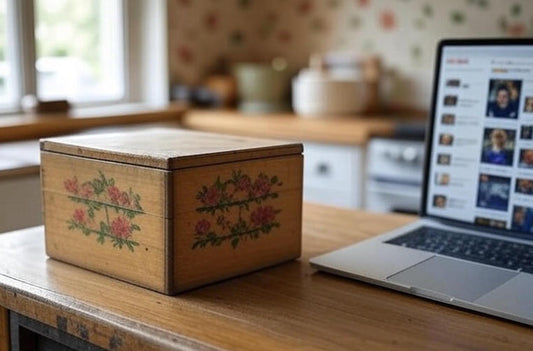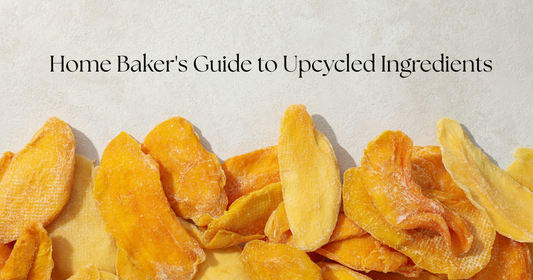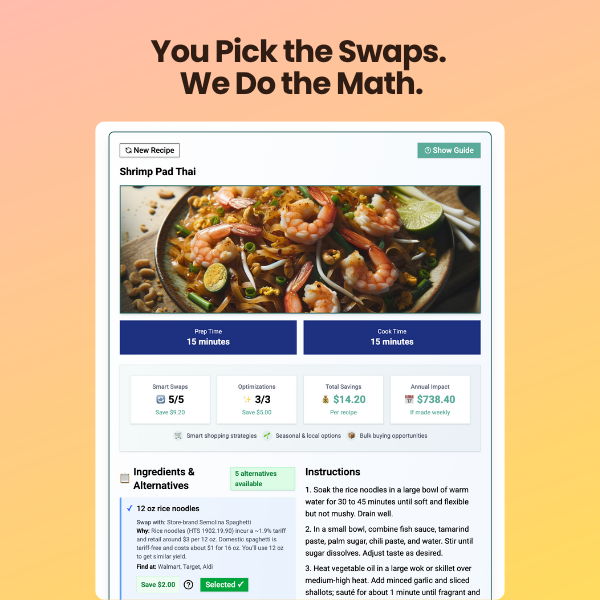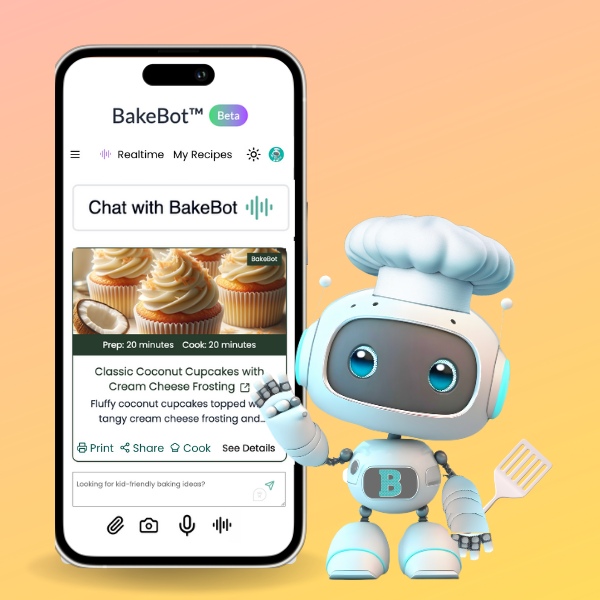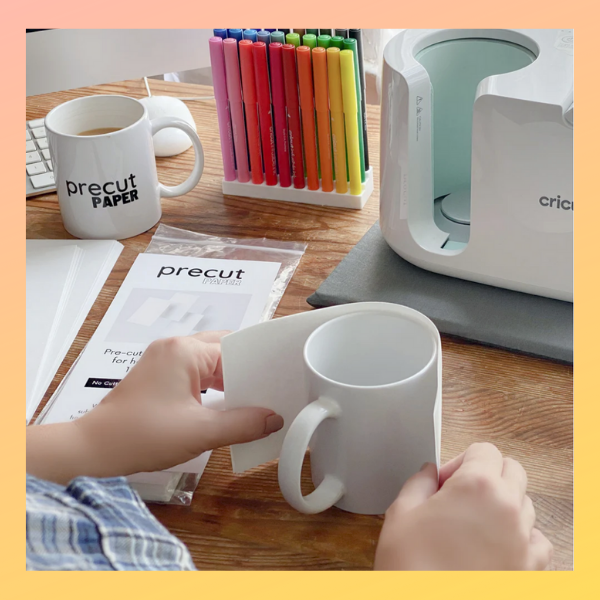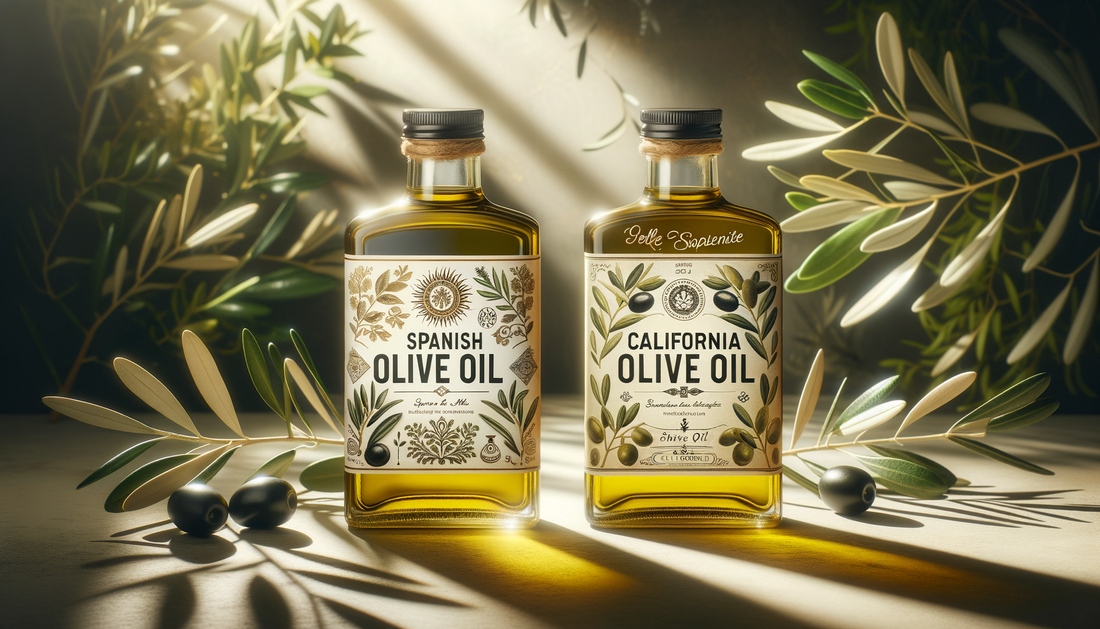
The $6 Olive Oil Discovery That Changes Everything
Babette PepajPicture this: you're making your favorite pasta dish, reaching for that $15 bottle of Spanish extra virgin olive oil like you always do. But today, something makes you pause and grab the $9 California Olive Ranch bottle sitting right next to it instead.
Same fruity taste. Same golden pour. Same perfect finish on your aglio e olio. But $6 less out of your wallet.
That moment of realization—that you've been overpaying for imported ingredients without any real benefit—is exactly how SmartSwap at BakeBot.ai was born.
When "Premium Imported" Became "Expensive Habit"
We've all been there. Standing in the grocery store, automatically reaching for ingredients that sound fancy because, somewhere along the way, we convinced ourselves that imported equals better. Spanish olive oil. Italian San Marzano tomatoes. French butter.
But what if that's just marketing working exactly as intended?
The olive oil example is perfect because it's so clear-cut. That Spanish bottle costs $15 largely because of tariffs (around 10% markup), shipping costs, and the "premium imported" positioning. Meanwhile, California producers are making world-class olive oil right here, winning international competitions, and selling it for 40% less.
The crazy part? Most people prefer the local option in blind taste tests.
Your Recipe Is Probably Costing You $20 Extra
Here's where it gets interesting. That olive oil isn't operating in isolation—it's part of a whole recipe. And if you're defaulting to imported olive oil, you're probably doing the same thing with other ingredients without even realizing it.
Take a classic ratatouille recipe: Spanish olive oil ($15), San Marzano tomatoes ($8), imported herbs de Provence ($12), and authentic French sea salt ($10). You're looking at $45 just for these four ingredients, and that's before you even get to the vegetables.
Upload that recipe to SmartSwap—paste the URL, screenshot the page, or just type it in—and within seconds you get a complete breakdown. Not just "try local alternatives," but specific intel: "California Olive Ranch at Target, aisle 14 ($9). Hunt's diced tomatoes at Kroger, aisle 2 ($3). McCormick herb blend at Walmart, spice aisle ($4). Morton sea salt at any grocery store ($3)."
Same recipe, same flavors, $26 total, and you know exactly where to find everything. You just saved $19 and eliminated the guesswork.
The "Aha" Moment That Happens Every Time
Here's what makes SmartSwap brilliant: you literally just upload anything. Found a recipe on Instagram? Screenshot it. Bookmarked a cooking blog? Drop in the URL. Have your grandmother's handwritten recipe card? Take a photo. Copy and paste from your notes app? Done.
Within seconds, SmartSwap scans every ingredient and flags the ones most likely to be imported. But here's the game-changer—it doesn't just tell you "this is probably imported." It tells you exactly what local brand to buy instead, how much you'll save, and which stores near you actually carry it.
So instead of wandering grocery aisles playing detective, you walk in with a precise shopping list: "Aisle 3 at Whole Foods: California Olive Ranch instead of that Spanish bottle. Aisle 7 at Safeway: Lundberg rice instead of imported Arborio. Farmers market booth #12: Local honey instead of international brands."
Shopping local has never been this easy because nobody's ever done the homework for you before.
Users typically have three reactions:
- Surprise: "I had no idea I was buying imported honey when local honey was right there for half the price."
- Curiosity: "Let me try this comparison and see if I can actually taste the difference."
- Relief: "Finally, someone who gets that I want to cook well without going broke."
Beyond Olive Oil: The Rabbit Hole Gets Deeper
Once you start seeing these swaps, you can't unsee them. Imported vanilla extract when American vanilla is identical? Local maple syrup instead of international brands? Domestic spices that are fresher because they didn't travel 5,000 miles?
The tool reveals patterns you'd never notice otherwise. That "authentic" Mexican hot sauce might actually be made in California. Those "European" herbs might have domestic versions that are literally the same plants grown in different soil.
SmartSwap doesn't just show you the alternatives—it calculates exactly how much you'll save and often includes notes about why the local option might actually be better (fresher, less shipping time, lower carbon footprint).
The Real Game-Changer: No More Grocery Store Detective Work
Where SmartSwap gets really clever is eliminating the frustration of "shopping local." You know the drill: you want to buy local, but you're standing in aisle 12 squinting at tiny labels trying to figure out where things are actually made, Googling brands on your phone, and ultimately giving up because you have places to be.
SmartSwap flips this completely. Upload your weekly meal plan (however you have it—recipe URLs, photos, text files, whatever) and get a personalized shopping guide. Not just ingredient swaps, but actual store locations: "Stop 1: Trader Joe's for these 6 items. Stop 2: Local farmers market for these 3. Stop 3: Costco for bulk versions of these 4."
It becomes effortless. Users report cutting their grocery shopping time in half while saving 25-30% on their bills, simply because they're not wandering around confused anymore.
The Vermont Maple Syrup Moment
Every SmartSwap user has their "Vermont maple syrup moment"—that one ingredient swap that makes everything click. For some, it's discovering that local honey is half the price of imported brands and tastes more interesting. For others, it's realizing their "Italian" pasta sauce ingredients are mostly available from American producers at better prices.
The olive oil comparison might be your gateway drug, but the real addiction is discovering that you can cook better food for less money just by paying attention to where things actually come from.
Why This Matters More Now
With food inflation making grocery bills painful and supply chain issues making imported goods unreliable, tools like SmartSwap aren't just about saving money—they're about cooking smarter. When imported ingredients are getting hit with tariffs and shipping delays, local alternatives aren't just cheaper; they're more dependable.
Plus, there's something satisfying about supporting American producers who are often making products that are just as good (or better) than their imported counterparts, without the premium pricing.
Start With One Recipe
The beauty of SmartSwap is that you don't need to overhaul your entire cooking approach. Upload one recipe—maybe that pasta dish you make every Tuesday—and see what it finds. Try one or two swaps the next time you shop. Taste the difference (or lack thereof) and check your receipt.
That $6 olive oil savings was just the beginning. Your grocery budget is about to get a lot more interesting.
Ready to see what your favorite recipe is really costing you? Upload it to SmartSwap at BakeBot.ai and prepare to be surprised.


